Mass-based parties have dominated local politics for over half century. But, as events in 2009 show, popular support for them is gradually disappearing
Janet Jagan’s death last March marked the beginning of the end of the era of mass parties in this country. With her passing, a bizarre, non-constitutional campaign for President Bharrat Jagdeo to be re-elected to a third term suddenly erupted and a senior member of the People’s Progressive Party started to speak about a “leadership vacuum,” an expression never before uttered publicly in that party.
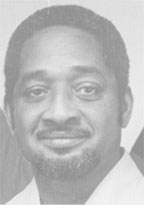
A similar situation had emerged with the death of the leader of the People’s National Congress, Forbes Burnham, in 1985. The contest that started then for the control of the party continues to the present day. These are clear signals that the two mass parties are more about the personalities of the leaders than the policies which can transform the lives of their followers.
Although the party structures seem to be sound outwardly, popular participation at general and regional elections seems to be falling. In 1997, about 408,000 persons are said to have voted; the number fell to 403,000 in 2001 and 338,000 in 2006.
These diminishing returns suggest that political parties might be gradually losing their legitimacy as true representatives of the masses and their vitality as essential mechanisms for generating fresh solutions to national problems. They are all busily building alliances or else searching for talented persons from outside of their ranks – whether called the ‘Civic’ or ‘Reform’ components, or some other name.
The decline and fall of mass parties is one of the great untold tales of Guyanese political history. Yet, the consequences of the collapse of these parties are likely to prove very profound.
Bedrock
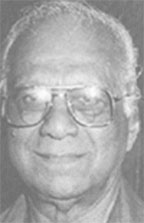
Political parties have been the bedrock of our representative system from the start of the era of universal suffrage with the 1952 ‘Waddington’ Constitution. Prior to the formation of the original People’s Progressive Party in 1950, parties such as the British Guiana Labour Party were ad hoc platforms formed from a ‘core’ of persons to contest the elections for individual seats in the Legislative Council and little thereafter.
Guyana’s two mass parties – the People’s Progressive Party and People’s National Congress – were the first to be established on a permanent basis with offices and paid staff and to claim to represent the masses on a continuous basis.
The introduction of universal adult suffrage paved the way for large numbers of grassroots members to be mobilised and for a centralised national structure to be erected. The mass party – a form of political organisation that never existed before – was thus engendered.
Since ideological education and political integration of the newly-enfranchised masses were the primary goals of the mass parties, the mobilisation of as many individual supporters as possible was necessary both for voting at elections and for raising funds to run the party apparatus. Whereas the ‘core’ parties of the traditional right were sustained by a limited number of wealthy backers, the ‘mass’ parties of the ‘left’ sought success to get access to the spoils of office.
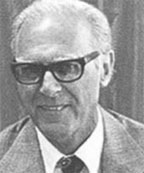
Mass parties were the product of the collectivist era in world politics and were influenced strongly by the rise of the Union of Soviet Socialist Republics. Guyana’s mass-based political parties reached their zenith in the years between the end of the Second World War in 1945 and the end of the Cold War with the collapse of the USSR in 1991. At the start of this era, many poor workers and farmers were led to believe that society could be radically transformed into something qualitatively different.
The mass party, essentially, was a socialist invention. In post-war British Guiana, most local labour unions were allied to political parties and the organised working class became a large proportion of the electorate. Of the six PPP ministers in the short-lived 1953 administration, four were active leading officials of labour unions.
As independence approached, however, mass parties in Guyana became platforms for tribal mobilisation, the primary goals of which were immediate electoral success and long-term representation of their constituents. In general terms, the People’s Progressive Party was supported mainly by East Indians, the People’s National Congress by Africans and the United Force, by Portuguese, Amerindians and persons of mixed descent.
Although ethnic political participation persisted, workers’ membership of unions has been declining and the willingness of unions to support parties has lessened since the mid-1980s. At present, the Guyana Trade Union Congress is a broken reed, a frail skeleton of the organisation that could call general strikes in the mid-1960s.
Representation
It was natural that the demise of ‘world’ socialism should mean also the demise of the mass party. But this change raises fundamental problems for democratic governance. Parties are likely to remain crucial in the formation of governments and in ensuring the periodic accountability of rulers to the people in general elections. If they cease to be the primary vehicles of political engagement, what will replace them and how will the population be able to achieve change?
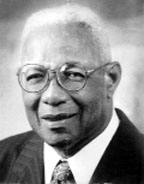
The fact is that, over the years, the quality of political representation has been changing in several ways. The most obvious change has been observed in the National Assembly which has become semi-detached from mass concerns. As Jimmy Carter warned five years ago, most members of the Assembly are “dependent upon, and responsible to, the political party that chooses them, and not to the people whom they profess to represent.”
Change has also taken place at the level of local government where parties tend to dominate the decisions that are made. Whereas, in the past, local government derived from grass-root community leaders, now it descends from the decisions made by a dominant political party.
Councillors at the neighbourhood and regional levels are usually nominees of their parties rather than representatives of their communities. Local government organs have started to become sclerotic and are unable to mobilise the sort of support which would enable them to effectively administer their districts. Local authorities, like political parties, have ceased to be vehicles for democratic engagement and have frequently been supplanted by government-appointed interim management committees, the ultimate denial of democracy.
Another change has been in ideology. Prompted in part by the eclipse of socialism, there has been a shift from ‘positional’ politics, where parties disagreed on fundamentals − socialism and state ownership of basic industries − to ‘relational’ issues, where there is general agreement on basic aims − education and health care. Political rivalry now is not so much about objectives as about which party is best placed to achieve them.
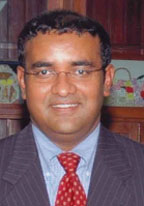
There has been change also in the diminishing influence of the ordinary membership within the parties and a parallel increasing power of the leadership. For the party in government, this is reflected in the personalisation of the executive through the increasing dominance of individual leaders. Mass party leaders have always sought to transform their parties so that they became vehicles for their own personal vision of leadership rather than the interests of the masses.
Crises
With much less than two years to go before the next general elections, the parties will all be challenged to change their traditional tactics in order to squeeze as many votes as possible from a shrinking and increasingly sceptical electorate. The biggest questions to emerge, however, are not policies to alleviate poverty or even to advance democracy but about who should be the party’s presidential candidates. This means, in other words, who should lead the ‘core’ groups who aspire to dominate their parties for the five years after 2011.
The People’s Progressive Party, as it prepares to celebrate its 60th anniversary on 1st January 2010, is in its worst leadership crisis since it expelled Forbes Burnham and his cohorts in 1955. That the campaign for Bharrat Jagdeo’s re-election started outside of the party is a testimony to the triumph of the ‘core’ tactics above the ‘mass’ politics.
It also has implications for mass representation in that the campaign is a measure of the creeping weakness of the party as a unified source of policy. In the worst case, it could be that Jagdeo no longer thinks that he needs the support of the party bureaucracy to have his way. In any event, he started the process of faction-building several years ago and this new, loyal base is rich enough to establish his own political party if he so desired.
The People’s National Congress is Guyana’s second oldest, second largest and second most successful political party. Despite its dismal electoral performance in 2006, winning the support of 36 per cent of the electorate indicated that substantial mass support remains. Increasingly, however, its constituents have started to seek alternative remedies to resolve their problems.
Robert Corbin won the PNCR’s leadership contest convincingly at the 16th Congress last August. But this was a Pyrrhic victory that left the party demoralised and the winner exhausted. As usual, the contest was not about policies and programmes but about personalities and occupying positions in the hierarchy. That party has been debilitated by the apathy of its traditional constituency, the gradual withdrawal of prominent members and, worse, by the withdrawal of financial support.
The three minor parties in the National Assembly – the Alliance For Change; Guyana Action Party-Rise Organise and Rebuild Guyana Movement and The United Force – seem resigned to their destiny. They will never mature into mass parties. As a result, they have all been forced to revert to the 1940s model of the ‘core’ rather than ‘mass’ model.
The leading ‘core’ of the Alliance for Change − Raphael Trotman, Khemraj Ramjattan and Sheila Holder − are all former members of the People’s National Congress, People’s Progressive Party and Working People’s Alliance, respectively. At the AFC’s 2nd Delegates’ Convention in July 2009, they were returned, predictably, as Leader, Chairman and Vice-Chairperson, respectively. Even after winning an impressive 8.4 per cent of the popular vote at the last elections, the AFC has found it impossible to pupate into a party of the people.
Trotman was obliged to confess “We recognise that we cannot go it alone.” He acknowledged that the AFC had started pursuing strategic partnerships to build a united front to contest upcoming elections. He begged that the party not be held up against the template designed over 50 years ago. In effect, the template that it adopted was the one designed 80 years ago in the pre-mass party era!
The Guyana Action Party-Rise Organise and Rebuild Guyana Movement coalition won 1.2 per cent of the popular vote in the 2006 elections. Neither micro-party nourishes the ambition of becoming a mass party; each seems satisfied with its small constituency. The GAP-ROAR coalition, indeed, might be the model of preference for voters who feel that their local interests are likely to be smothered or ignored by the big parties.
Manzoor Nadir − leader of The United Force, the other micro-party in the National Assembly − occupies an anomalous position. As the Minister of Labour, Human services and Social security in the PPP/C administration, Nadir still remains a member of TUF but is not a member of the so-called ‘civic’ component nor does a PPP/C-TUF alliance exists. The party nevertheless managed a well-funded campaign, largely in the hinterland, where it won 0.8 per cent of the electorate.
The future
The year 2009 has been one of deterioration, not of improvement, in the political representation of the masses. The erosion of party membership and identification can be seen as a consequence of decades of manipulation. It is also the result of the social and ideological changes that are eclipsing the importance of the mass party. It means that while the leaders continued to try to lead, the followers have been ceasing to follow or were ceasing to see themselves as followers. Unless parties become truly democratic, more members will quit their ranks and fewer persons will turn out to vote at elections.
Parties still have meaningful roles to play. Members of the National Assembly are not ‘independents but overwhelmingly belong to parties and are likely to be so for years to come. Parties, moreover, maintain control over significant reservoirs of patronage such as nominations for appointment as members of boards and commissions. Recruitment of candidates for representative office at both national and regional levels, therefore, remains inconceivable without political parties in the short term.
Popular interest in politics is strong but voters have begun to see parties not as the only, or even the best, means by which to influence political events.




